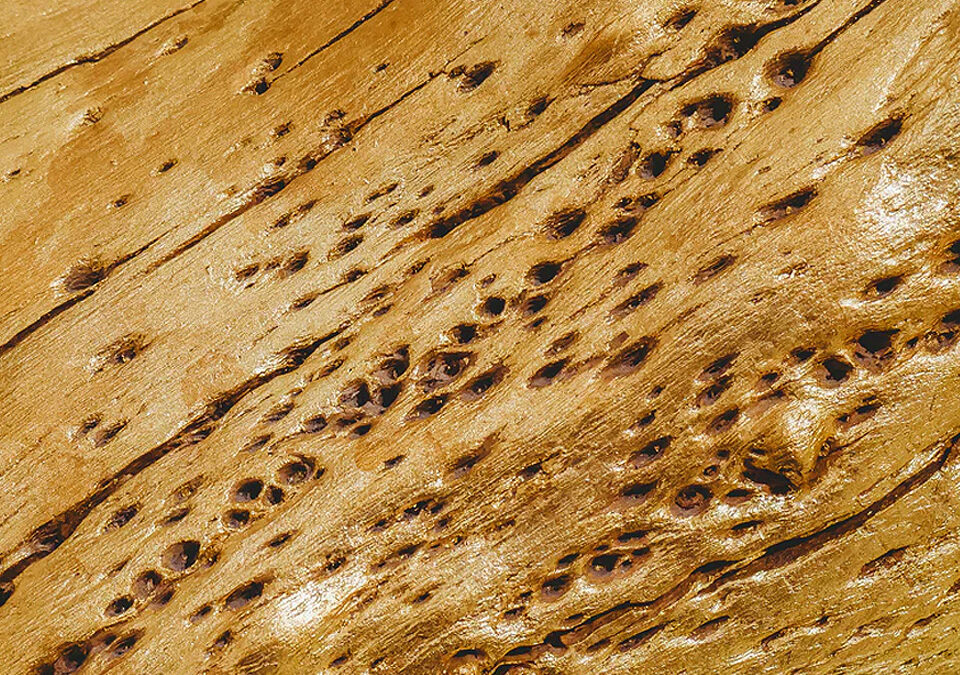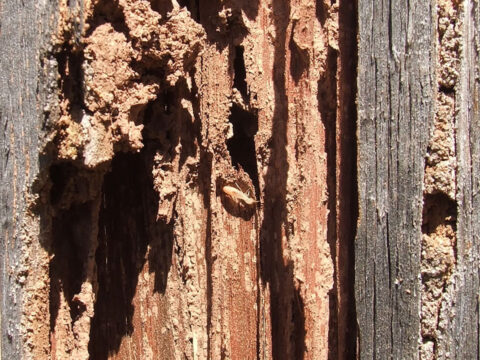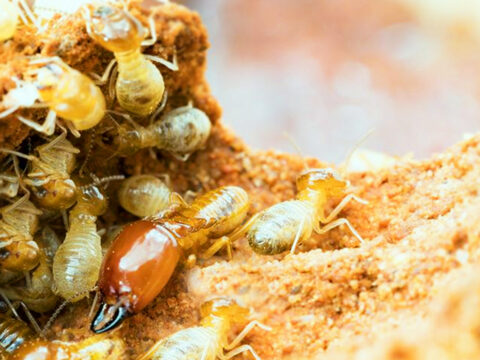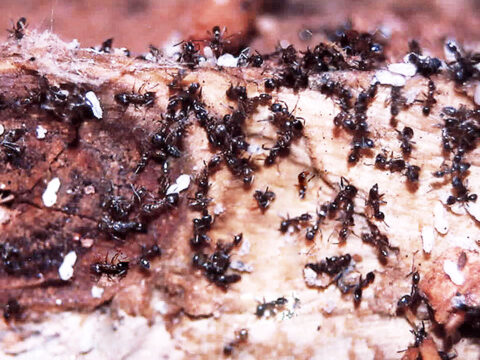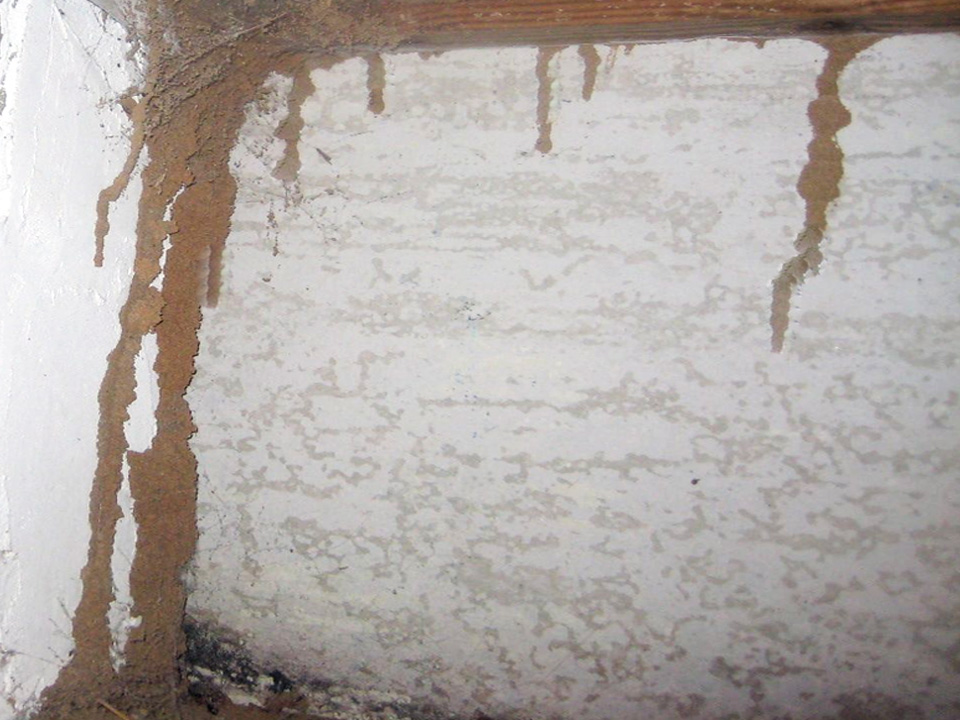
What Happens To Termites In The Winter?
August 18, 2021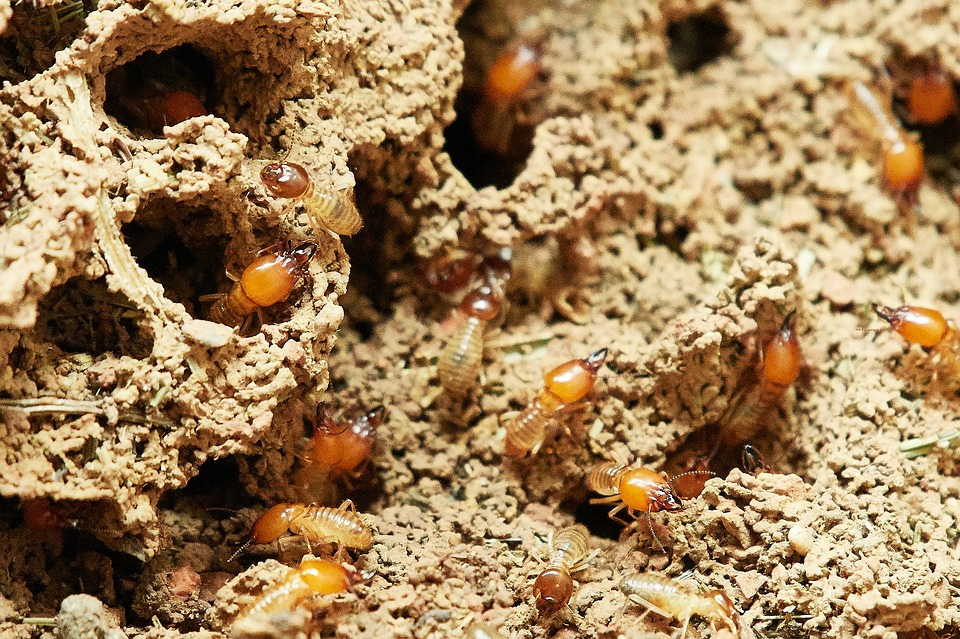
Do Termites Die When Exposed To Sunlight?
October 18, 2021Termites are habitual wood feeders and will ravage your home, causing tremendous losses if not controlled in time. They have voracious appetites for wood and will munch on various wooden structures without a second thought. For this reason, termites will make pinholes in these structures to dispose of their droppings and to create exit routes for their young ones to take their first flight.
Termites bore holes and create tunnels in the wood where they live, reproduce, and get nourishment since their bodies produce digestive juices compatible with wood cellulose. However, you must be meticulous when checking for a termite infestation since they are not the only culprits that savor your walls.
What Are Termite Pinholes And What Do They Look Like?
Termite pinholes, also called kick out or exit holes, are spotty openings that can miss the eye from afar but are quickly noticeable from a closer look.
These holes vary in size, and the smaller ones don’t reveal quickly. They range between an eighth to a quarter of an inch and are usually covered with crusty lumps of sand or termite droppings that are hard to resist forces that can break them.
Check for the following signs to determine whether you have a termite infestation and stop confusing them for other insects.
-
Broken wings lying all over – An early sign of termite infestation in your home is the sight of tiny and transparent broken wings lying all over. While there can’t be many of them, a single or two wings should ignite your intuition and raise your suspicion of an infestation.
-
Tiny holes on your drywall – Of course, any odd tiny holes on your drywall or wooden walls should be enough to alert you to a possible termite infestation. Termites take refuge in tiny holes, which are also a haven for their young ones. They make these holes to facilitate their toddler insects’ first flights and exit their tunnels to reproduce.
-
Termite droppings – Sawdust and wood carvings closely resemble termite droppings or frass, so don’t mistake them as a sign of a possible termite infestation. Termite droppings appear like sawdust, but they are usually clamped and hexagonal. Alternatively, sawdust indicates the presence of other insects, including wood beetles and carpenter ants.
-
Clicking noises – Termites usually produce clicking sounds as they feast or bore through the wood, which sells them out. These sounds should be enough to inform you that you’re in trouble. Besides, perceiving hollow sounds when you tap against wood or drywall is a clear indication of an infestation.
Why Do Termites Make Pinholes?
Termites leave pinholes that serve a primary function of exiting drywalls and other wooden structures. They are, fundamentally, exit or kick holes that allow adult termites to leave the tunnels before the onset of a mating period for reproduction.
These pinholes are also defecation points where termites drop their frass or sometimes clamp them together to form dry crusty caps that completely cover them up.
Termites also tunnel through wood and drywalls and can incidentally meet a surface. When this happens, it creates a series of pinholes that are visible from the outside.
In addition, numerous hearsays justify the reason for termites creating pinholes for ventilation. However, these arguments hold no ground because termites have an exceptional prowess to create their air conditioning systems inside their tunnels.
Should You Cover Termite Pinholes?
Covering a termite hole can be effective but not as efficient. While covering these holes prevents the insects’ escape and subdues them to death, it doesn’t stop them from creating alternative routes for a way out. Covering a termite pinhole only works in the short term and can be drastic in the long term, especially if you’re dealing with larger infestations.
However, if the pinholes don’t appear to be active with termite activity, the covering can be ideal for improving the look of your wooden floor or wall as well as preventing future pest infestation.
A great way to cover termite pinholes is using caulk if the situation calls for it. You can insert it in the holes using a thin fitting tube until they are all filled to the brim. Caulk usually dries and improves the density of your wall, further remedying the situation. If possible, try eliminating termites using practical and environmentally friendly chemicals before caulking visible pinholes. This technique works at getting rid of termite infestations as well as remedying damaged drywalls and wood.
Keep in mind that termites are adept at quickly boring deep into spaces you can’t even see or reach. While DIY treatments are suitable only for small and isolated infestations, such as a new infestation in a pile of firewood or a piece of furniture, you’re unlikely to have success using these treatments for bigger infestations in your home.
Thus, when it comes to eliminating termite infestations, the best thing to do is to reach out to the professionals for termite control in Orange County, California.
Chem Free Exterminating offers natural yet effective termite treatments, so call us for a termite inspection and our expert team will create a pest control plan that will not only eradicate any termites currently present in your home but will also prevent future infestations.

